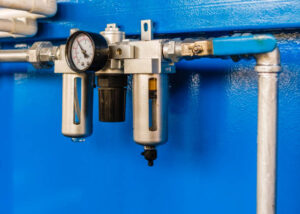
when selecting a battery torque wrench
When considering a battery torque wrench for your industrial or
In the realm of modern industrial and automotive applications, the utilization of pneumatic tools, commonly known as air tools, has become synonymous with precision, power, and efficiency. This guide aims to delve into the intricacies of these air-powered wonders, exploring their functionality, advantages, and diverse applications across various industries.
Understanding Pneumatic Tools
Pneumatic tools, at their core, operate through the utilization of compressed air as a driving force. The compressed air, typically generated by a specialized compressor, is channeled into the tool, where it powers a pneumatic motor. This ingenious design allows pneumatic tools to execute a diverse range of tasks, from drilling and fastening to sanding and painting, with remarkable precision and efficiency. The fundamental appeal of these tools lies in their lightweight construction, making them ergonomic and easy to handle for operators. This, coupled with their impressive power-to-weight ratio, has propelled pneumatic tools to the forefront of various industries.
Widely embraced in manufacturing, construction, automotive, and maintenance sectors, pneumatic tools have become synonymous with enhanced productivity and accuracy. Their lightweight nature minimizes operator fatigue during prolonged use, while the consistent power output ensures reliable performance in demanding applications. The adaptability of pneumatic tools to different tasks and their robust design contribute to their indispensability in a variety of professional settings, where efficiency and precision are paramount. As technological advancements continue to refine these tools, the future promises even greater innovations in pneumatic technology, further solidifying their crucial role in modern workplaces.
Key Components
The pivotal components within pneumatic tools collectively contribute to their efficient operation. Central to their functionality is the pneumatic motor, a sophisticated mechanism designed with precision to convert compressed air into mechanical energy. This conversion is crucial for driving the various functions of the tool, enabling it to perform tasks with accuracy and power.
Compressors stand as the driving force behind pneumatic tools, providing a steady and controlled supply of compressed air. These compressors are engineered to generate and maintain the necessary air pressure required for optimal tool performance. The continuous stream of pressurized air, directed by the compressor, is the lifeblood that powers pneumatic tools through their diverse applications.
Within the intricate design of pneumatic tools, valve systems play a critical role. These systems meticulously regulate the airflow, allowing for fine-tuned control over the tool’s speed and torque. The precision offered by these valves is essential for adapting the tool to different tasks, ensuring that operators can achieve the desired level of power and accuracy. In essence, the seamless interaction between the pneumatic motor, compressor, and valve systems forms the foundation of a pneumatic tool’s capability, making it a reliable and versatile asset in professional settings.
Advantages of Pneumatic Tools
Power-to-Weight Ratio
One of the standout features of pneumatic tools is their exceptional power-to-weight ratio, a key factor contributing to their widespread adoption in various industries. This ratio signifies the amount of power a tool can generate in relation to its weight, making pneumatic tools notably lightweight while still delivering impressive force. This characteristic renders them ideal for applications where portability and maneuverability are paramount, allowing operators to wield powerful tools without sacrificing ease of use or agility, a critical advantage in dynamic work environments.
Consistent Power Output
In contrast to electric tools that may be susceptible to power fluctuations, pneumatic tools exhibit a consistent power output. The reliable and steady stream of compressed air ensures that these tools maintain a constant level of performance, a crucial attribute in demanding work environments. This consistency not only enhances the precision of tasks but also contributes to the longevity of the tools, as they operate under more stable conditions, minimizing wear and tear associated with power irregularities.
Durability
Pneumatic tools stand out for their durability, a quality derived from their design with fewer moving parts and reduced heat buildup during operation. The simplicity of their mechanical structure not only contributes to a longer lifespan but also makes maintenance more straightforward. This durability factor, coupled with the inherent resistance to overheating, positions pneumatic tools as a cost-effective choice for businesses, as they often require less frequent repairs and replacements compared to their electric counterparts, ultimately contributing to increased operational efficiency and reduced downtime.
Reduced Vibrations
The design of pneumatic tools incorporates a noteworthy feature that sets them apart—the reduction of vibrations during operation. This inherent characteristic is a result of the tool’s mechanism, which efficiently absorbs and dissipates vibrations generated during use. The consequence of this design is twofold: first, it contributes significantly to operator comfort by minimizing the transmission of vibrations to the user’s hands and body. This is particularly crucial during prolonged use, where operator comfort directly influences work efficiency. Second, the reduction in vibrations plays a key role in minimizing operator fatigue, a factor that is pivotal in maintaining a high level of productivity. By mitigating the physical stress imposed on the user, pneumatic tools not only enhance the overall working experience but also contribute to safer and more precise operation, making them an indispensable choice in professional settings.
Applications Across Industries
Automotive
Pneumatic tools are widely employed in auto repair shops for tasks such as tire inflation, impact wrenching, and paint spraying.
Manufacturing
From assembly lines to precision machining, pneumatic tools play a pivotal role in enhancing production efficiency and ensuring quality.
Construction
Pneumatic nailers, drills, and grinders are staples on construction sites, offering the power needed to tackle robust materials with ease.
Maintenance
In maintenance and repair scenarios, pneumatic tools facilitate swift and precise tasks, ranging from bolt tightening to equipment servicing.
Safety Considerations
While pneumatic tools offer numerous advantages, safety remains a paramount concern. Adequate training, proper tool maintenance, and the use of appropriate personal protective equipment are essential to mitigate risks associated with the operation of these powerful tools.
Conclusion
Pneumatic tools stand as a testament to the marriage of engineering innovation and practical utility. Their versatility, reliability, and efficiency make them indispensable across a spectrum of industries, empowering professionals to accomplish tasks with unparalleled precision and speed. As technology grows, the future holds exciting possibilities for the evolution of pneumatic tools, further solidifying their place as indispensable instruments in the modern workplace.

When considering a battery torque wrench for your industrial or

Torque wrenches are powerful tools that require utmost care and

Why choose Smart Torque Ing 1. Reliability: Smart Torque Company